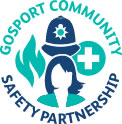If your child is active on a social networking site you’ve never heard of, the chances are they’re only a few clicks away from violent, sexual or traumatising content.
The websites and apps young people use to communicate and share are also where they encounter adults being indecent, misogynistic jokes, cyber-bullying and pro-anorexia and suicide “support groups”, according to a survey carried out by the NSPCC.
In the worst case scenario, these platforms can be incredibly dangerous for your child.
The charity is so concerned about the failure of social networking sites to put their own houses in order, that they are calling on government to appoint a regulator to enforce minimum standards for safety, privacy and child protection.
‘More than sixty per cent of young people we asked said social media platforms need to do more to keep children safe,’ sad chief executive Peter Wanless.
‘These companies need to take more responsibility for keeping children safe online and a new regulator may be required if industry can not regulate itself.’
The NSPCC surveyed 1,725 children and young people to find out which of their 50 favourite sites carried the most inappropriate content.
100% of children surveyed reported finding shocking and upsetting material on Sickipedia, a site which prides itself on containing ‘the most offensive and politically incorrect jokes and puns’ available.
74% of children also found unpleasant material on Yik Yak, a seemingly harmless site which promises to connect users with their community ‘herd’ via online chat.
On video messaging sites Chatroulette and Omegle, 92% and 89% of children found inappropriate content, while on Ask.fm the figure was 88%
The NSPCC also warns that the contents of these sites can have negative effects on behaviour and can encourage bullying.
Emily Cherry, head of participation, said: ‘Sickipedia plays a role in friendship and banter in the classroom – if you don’t get, or enjoy the jokes, you’re excluded from the gang. Then there’s the way girls are commodified on the site.’
‘Children can see the risks, but for them the excitement outweighs the danger. They see it as a prank or dare.’
The basic minimum safety standards for sites used by under-18s, says the NSPCC, should include:
- Alerting children to the fact they are interacting with an adult; turning on privacy and turning off location settings
- Automatic safety reminders before children send images or interact with new users
- And a commitment to report safeguarding concers to the police or social services


